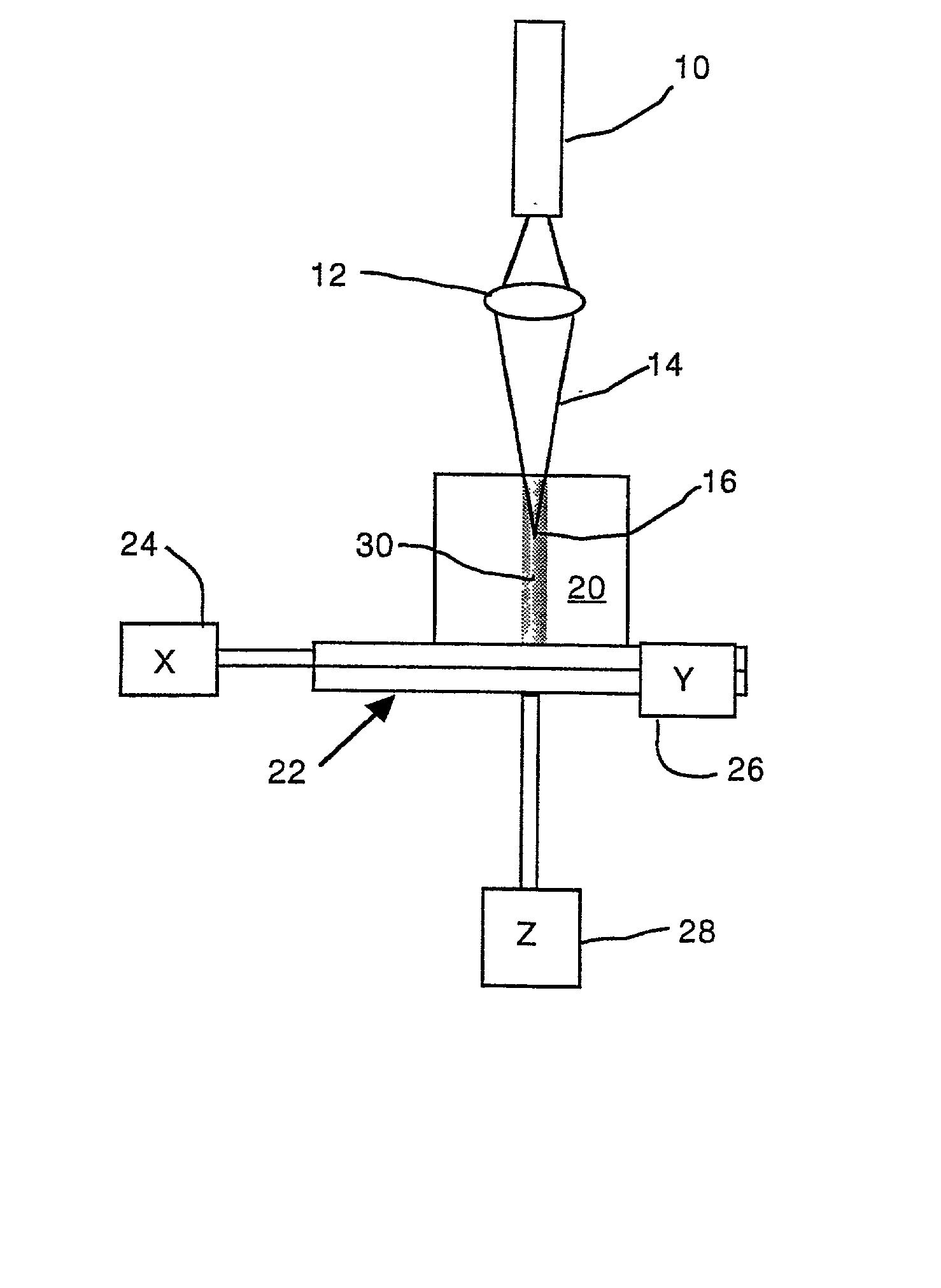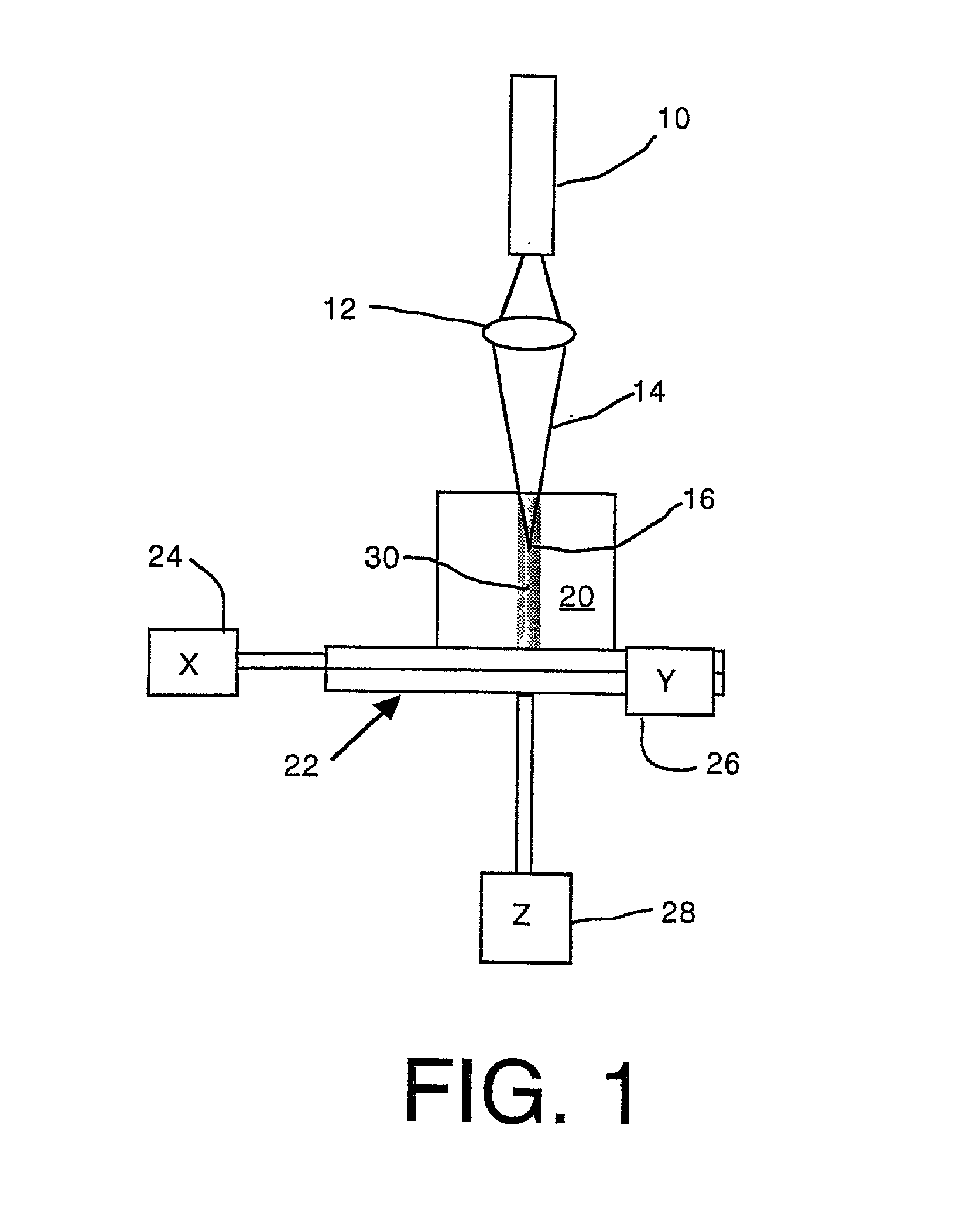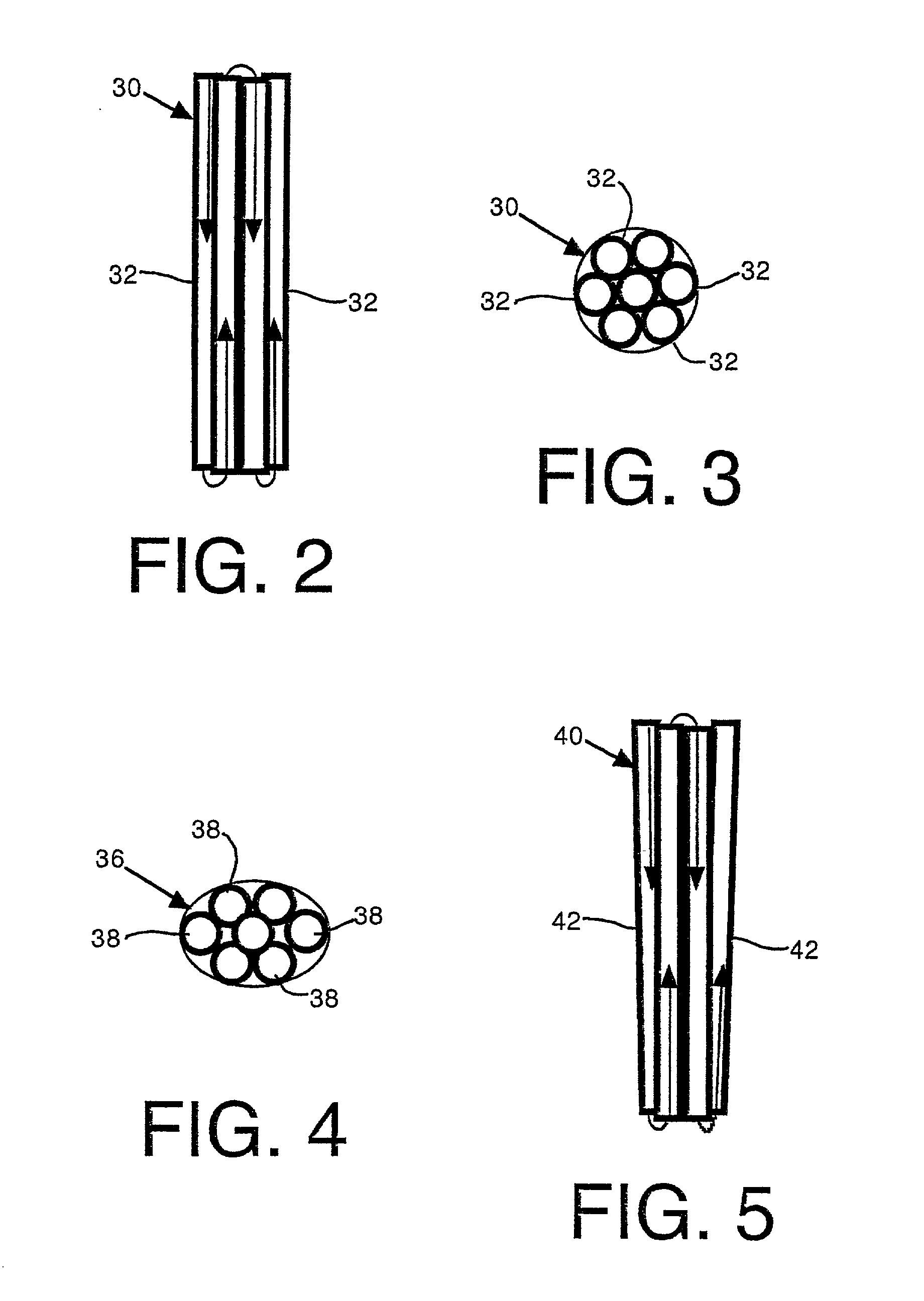Manipulating the size of waveguides written into substrates using femtosecond laser pulses
a technology of femtosecond laser pulse and waveguide, which is applied in the direction of instruments, photomechanical devices, optical elements, etc., can solve the problems of affecting the propagation of light, affecting and excessive pulse energy, so as to achieve control over the refractive index profile of the waveguide
- Summary
- Abstract
- Description
- Claims
- Application Information
AI Technical Summary
Benefits of technology
Problems solved by technology
Method used
Image
Examples
example b
[0059] A Ti:Sapphire femtosecond laser amplifier arranged in accordance with the system of FIG. 1 generates a 800 nanometer (nm) beam composed of an 20 kilohertz (kHz) train of 40 femtosecond pulses having a pulse energy of 0.75 microjoules (.mu.J). The beam was focused into a glass sample and translated in a helical pattern at a relative velocity of 20 microns (.mu.m) per second at a thread step size of 10 microns (.mu.m). A spot size of approximately 2 microns (.mu.m) produced better results than a spot size of approximately 4 microns (.mu.m).
[0060] FIG. 12 shows a cross section of the resulting transverse dimensions of the waveguide measuring approximately 3.5 microns (.mu.m) by 6.5 microns (.mu.m) with a refractive index change of approximately 0.005.
PUM
 Login to View More
Login to View More Abstract
Description
Claims
Application Information
 Login to View More
Login to View More - R&D
- Intellectual Property
- Life Sciences
- Materials
- Tech Scout
- Unparalleled Data Quality
- Higher Quality Content
- 60% Fewer Hallucinations
Browse by: Latest US Patents, China's latest patents, Technical Efficacy Thesaurus, Application Domain, Technology Topic, Popular Technical Reports.
© 2025 PatSnap. All rights reserved.Legal|Privacy policy|Modern Slavery Act Transparency Statement|Sitemap|About US| Contact US: help@patsnap.com



